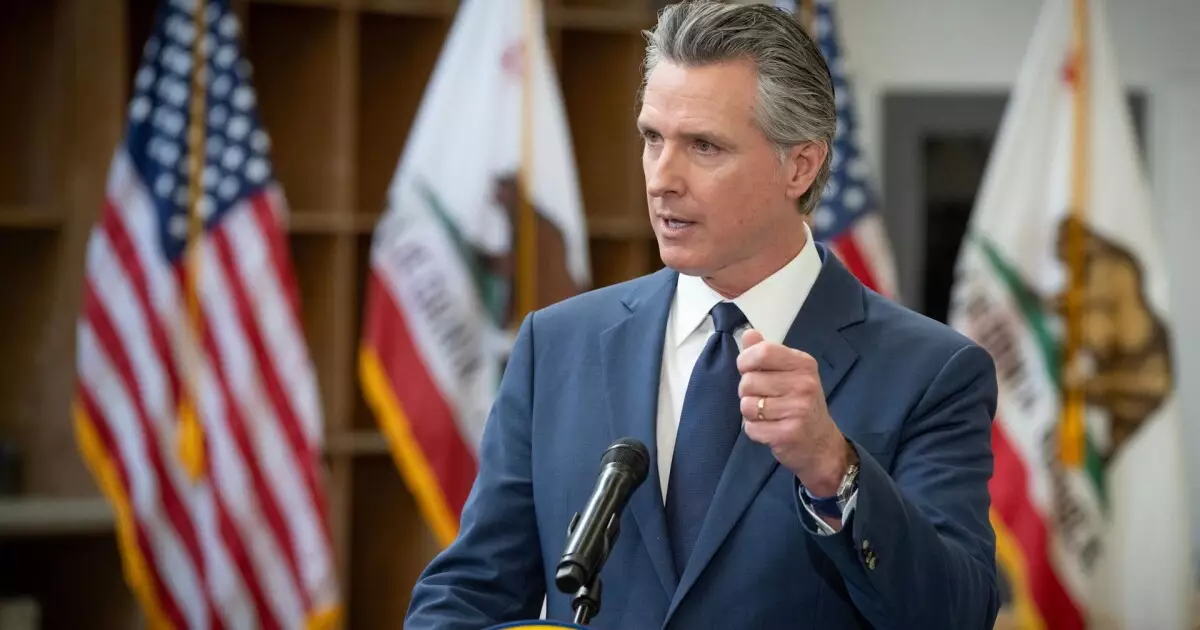In a recent address, California Governor Gavin Newsom unveiled a preview of the state’s 2025-26 budget, promising a balanced budget amid an array of economic fluctuations. This article seeks to analyze the implications of Newsom’s proposed budget and the economic conditions it reflects.
Governor Newsom’s announcement claimed a fully balanced budget without deficits or anticipated shortfalls, an assertion underscored by projected revenues climbing about $16.5 billion over the previous fiscal year. These hopeful numbers are attributed to a resurgent economy, robust stock market performance, and fruitful cash receipts. This initial outline offers a glimpse of the state’s financial future while highlighting the substantial contrasts between optimism and the potential uncertainties looming on the horizon.
The budget proposal amounts to an impressive $322.2 billion, with $228.9 billion allocated to the general fund. Interestingly, this proposal does not include plans for raising taxes — a commitment Newsom made to uphold during his administration. This stance could appeal to voters weary of increased financial burdens, yet it leaves essential state services vulnerable to cuts, especially if the incoming federal administration enacts drastic budget reductions.
A significant layer of complexity lies in the context of the upcoming federal transitions. Newsom’s concern over potential cuts to federal program funding and social services under the Trump administration looms large in his budget considerations. The prospect of $2 trillion in federal cuts is alarming, with potential ramifications across a broad spectrum of social programs that millions of Californians depend upon.
Newsom hinted at his worry over economic changes that could arise from federal policies—ranging from tariffs that could destabilize trade relationships to immigration policies affecting the labor market. As he noted, any major federal shift could drastically affect California’s economic landscape and subsequently alter the projections of revenue growth that his budget relies upon.
The timeline for budget adjustments adds another layer of strategic maneuvering for Governor Newsom. California’s budgetary framework allows for modifications between the proposed budget and a later revision in May, providing a degree of flexibility to navigate the uncertainties of federal funding and potential economic downturns. This strategic flexibility reflects savvy governance, as it provides the state with an opportunity to recalibrate priorities based on changing circumstances without being trapped in rigid frameworks.
In light of potential federal funding clawbacks, Newsom’s proposal includes an allocation of $25 million for the attorney general’s office to prepare for possible legal challenges against federal funding cuts. This proactive measure indicates a commitment to protecting state interests in a potentially adversarial federal landscape, with insights gathering from discussions with other governors similarly concerned about foregone federal resources.
Governor Newsom’s approach to budgeting is not purely fiscal; it also presents a complex interplay of politics and governance. Despite presenting an optimistic outlook, the underlying uncertainties brought on by federal governance threaten the political stability and administration’s ability to achieve its economic goals. The tension between state aspirations and federal reality can manifest in contentious legal battles, strained intergovernmental relations, and discrepancies in the implementation of social services.
Notably, Newsom has acknowledged the precariousness of these political interactions, implying that although federal leadership possesses considerable influence, the rule of law and judicial recourse are mechanisms that may offer recourse against potential overreach. This assertion reflects an understanding of governance that transcends fiscal responsibility; it’s about maintaining equilibrium amid variable power dynamics.
As the formal budget details surface in the coming days, skepticism mingles with hopefulness in California’s fiscal discourse. While Governor Newsom showcases a well-outlined budget balancing act, the ultimate effectiveness of such a proposal hinges on external economic conditions, anticipated federal policies, and the adaptability of state governance in navigating unforeseen challenges. The landscape is fraught with potential pitfalls, yet also glimmers with possibilities for resilient fiscal management, inviting stakeholders to engage actively throughout the ensuing legislative process.

